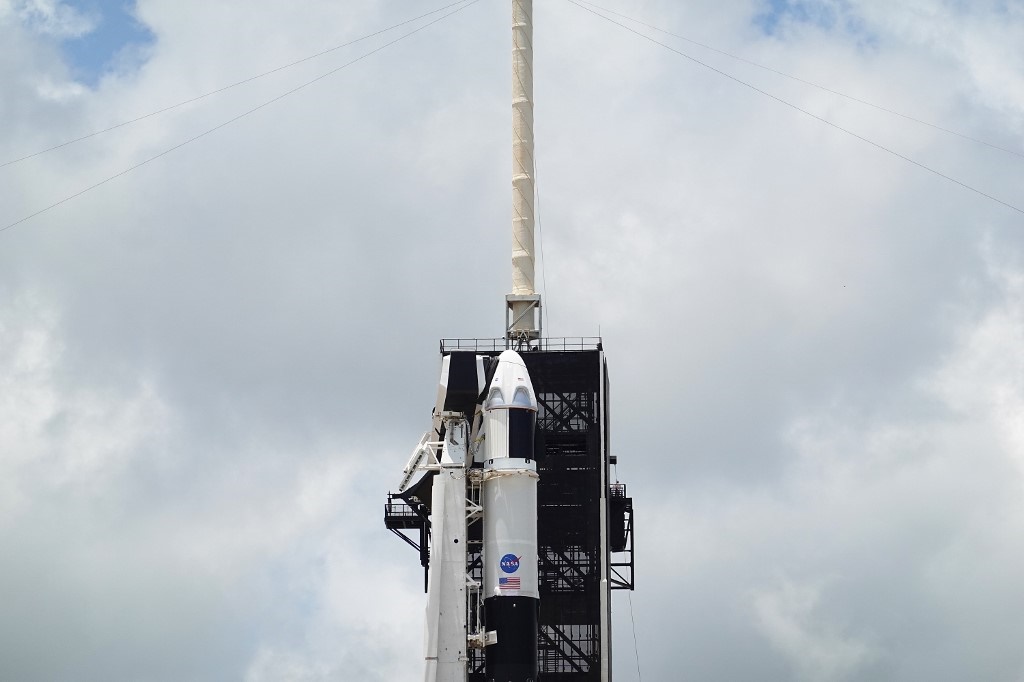- With a 50% chance of a thunderstorm on Saturday, the next safe window for the SpaceX mission is Sunday.
- The mission is a defining moment for SpaceX and NASA, as the agency has had to pay Russia to take its astronauts to space since 2011.
- President Donald Trump is expected to attend the launch.
A final decision on a launch attempt for SpaceX’s milestone mission to the International Space Center on Saturday afternoon will take place after assessing the weather that morning, NASA chief Jim Bridenstine said Friday.
Fears of a lightning strike postponed the initial takeoff attempt on Wednesday of what would have been the first crewed rocket launch from US soil in almost a decade, and the first time a commercial company has achieved the feat.
Earlier in the day, NASA said the chances of a Saturday launch were 50 percent. The weather forecast currently predicts a thunderstorm.
The next window, which is determined by the relative positions of the launch site to the space station, is Sunday, and fair weather is predicted.
NASA astronauts Robert Behnken, 49, and Douglas Hurley, 53, former military test pilots who joined the space agency in 2000, are to blast off from historic Launch Pad 39A on a two-stage SpaceX Falcon 9 rocket.
The same launch pad was used by Neil Armstrong and his Apollo 11 crewmates on their historic journey to the Moon, as NASA seeks to revive excitement around human space exploration ahead of a planned return to Earth’s natural satellite and then Mars.



The SpaceX Falcon 9 rocket with the Crew Dragon spacecraft attached is seen on launch pad 39A at the Kennedy Space Center on May 29, 2020 in Cape Canaveral, Florida. (AFP)
The mission comes despite shutdowns caused by the coronavirus pandemic, with the crew in quarantine for more than two weeks.
NASA has urged crowds to stay away from Cocoa Beach, the traditional viewing spot — but that did not deter many space fans on Wednesday.
President Donald Trump, who flew in for the previous launch attempt, is expected to attend again.
NASA has had to pay Russia for use of its Soyuz rockets to take its astronauts to space ever since the Space Shuttle program ended in 2011 and the decision was taken to shift focus to commercial partners for missions in low Earth orbit.
The mission is a defining moment for SpaceX, the company founded by Elon Musk in 2002 with a goal of tearing up the rules to produce a lower-cost alternative to human spaceflight.
By 2012, it had become the first private company to dock a cargo capsule at the ISS, resupplying the station regularly ever since.
Two years later, NASA ordered the next step: to transport its astronauts there by adapting the Dragon capsule.
The US space agency paid more than $3 billion for SpaceX to design, build, test and operate its reusable capsule for six future space round trips.
The project has experienced delays, explosions, and parachute problems — but even so, SpaceX has beaten its competitor, aerospace giant Boeing, to the punch.
Crew Dragon is scheduled to dock with the ISS about 19 hours after liftoff, for a duration that is yet to be finalized, but likely around early August.
Wednesday’s scheduled flight was scrubbed 17 minutes before blastoff because of high levels of atmospheric electricity that could have triggered a lightning strike on the rocket.

